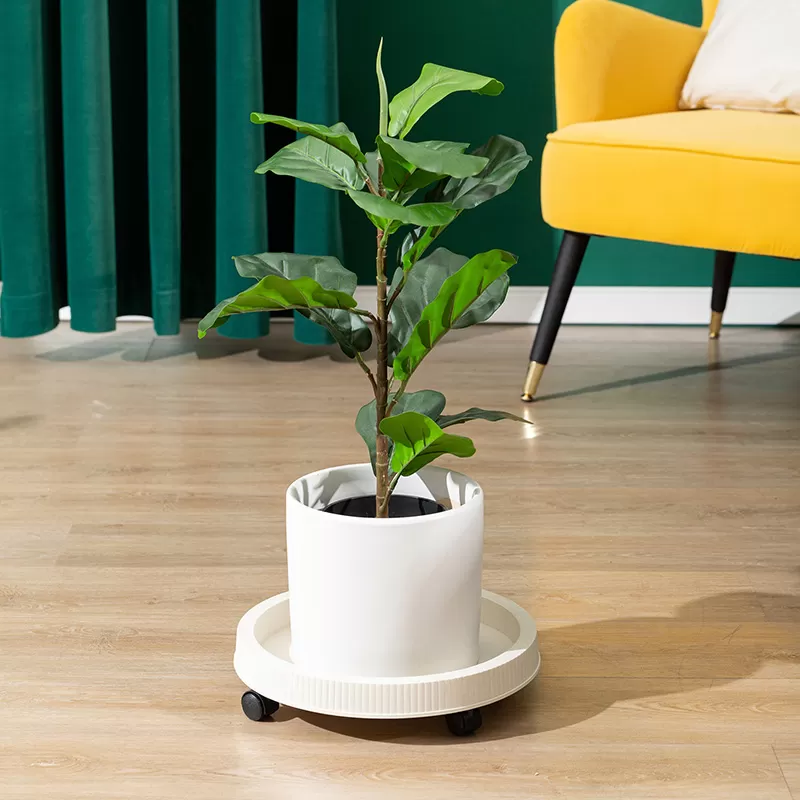Choosing the Right Plastic Flower Pot: A Comprehensive Guide
Plastic flower pots are popular choices for gardening due to their durability, affordability, and versatility. However, with the wide variety of options available, it can be overwhelming to select the right plastic flower pot for your specific needs. In this comprehensive guide, we will explore essential factors to consider when choosing a plastic flower pot to help you make an informed decision.

Size: The size of the plastic flower pot is an important consideration. It should provide adequate space for the plant's root system to grow and allow for proper drainage. Consider the mature size of the plant and choose a pot that will accommodate its growth. A pot that is too small can restrict root development, while one that is too large may lead to waterlogging.
Drainage: Proper drainage is crucial for the health of your plants. Look for plastic flower pots with drainage holes at the bottom or those that come with saucers to collect excess water. Adequate drainage prevents waterlogged soil, which can lead to root rot and other plant diseases.
Material Quality: Assess the quality of the plastic flower planter material. Look for pots made from durable, UV-resistant plastic that can withstand exposure to sunlight without fading or cracking. High-quality plastic pots will last longer and provide better insulation for the roots.
Insulation: Consider the insulation properties of the plastic flower pot. Some pots come with insulation features, such as double-walled construction or built-in thermal barriers. These features help regulate soil temperature, protecting the roots from extreme heat or cold, which is especially important in regions with fluctuating climates.
Style and Design: Plastic flower pots come in various styles and designs to complement your garden aesthetics. Consider the overall look you want to achieve and choose a pot that matches your garden's theme. Options range from sleek and modern designs to more ornate and decorative styles.
Weight: Plastic flower pots are generally lightweight compared to other materials like clay or ceramic. However, the weight may still vary depending on the thickness and size of the pot. Consider the weight of the pot, especially if you plan to move it frequently or if you have hanging planters. Lightweight pots are easier to handle and transport.
Environmental Impact: If environmental sustainability is a concern for you, look for plastic flower pots made from recycled materials or consider biodegradable options. Some manufacturers offer pots made from recycled plastic, reducing the environmental footprint. Additionally, biodegradable pots made from materials like coconut coir or rice husks provide eco-friendly alternatives that can be planted directly in the ground.
Budget: Set a budget for your plastic flower pot purchase. Plastic pots are generally affordable, but prices can vary depending on the size, brand, and design. Determine your budget range and explore options within that range, considering the features that are most important to you.
Longevity and Maintenance: Assess the longevity and maintenance requirements of the plastic flower pot. High-quality pots made from durable plastic will last longer and require less frequent replacement. Additionally, consider ease of cleaning and whether the pot is resistant to staining or discoloration.
Compatibility with Plant Types: Different plants have varying requirements, such as drainage needs or space for root growth. Consider the specific needs of the plants you intend to grow and choose plastic flower pots that provide the necessary conditions for their optimal growth.
By considering these factors, you can choose the right plastic flower pot that meets your gardening needs, enhances plant health, and complements your garden's aesthetics. Remember to prioritize factors such as size, drainage, material quality, insulation, and style to create an ideal environment for your plants to thrive.More details please contact OUK

